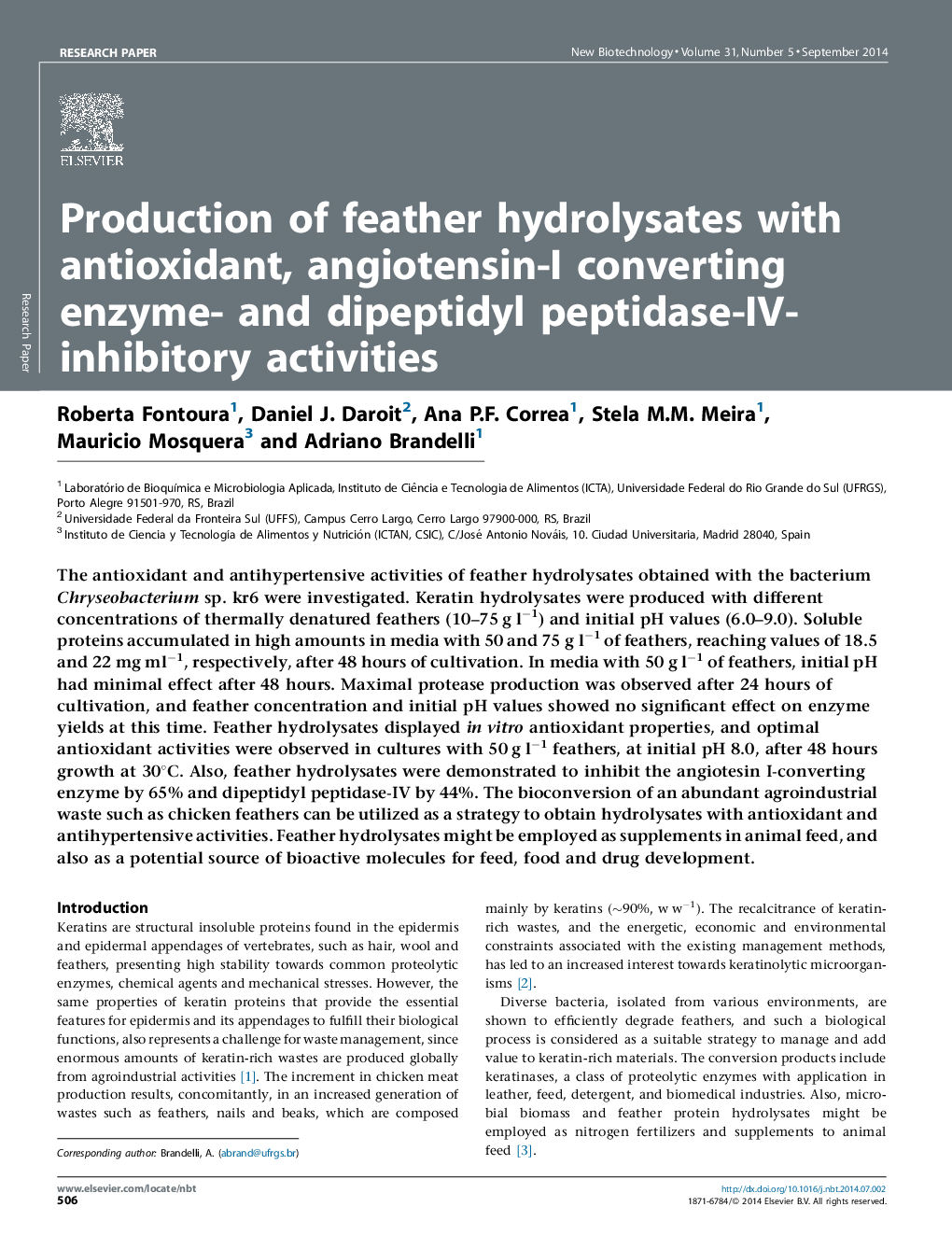| Article ID | Journal | Published Year | Pages | File Type |
|---|---|---|---|---|
| 10235015 | New Biotechnology | 2014 | 8 Pages |
Abstract
The antioxidant and antihypertensive activities of feather hydrolysates obtained with the bacterium Chryseobacterium sp. kr6 were investigated. Keratin hydrolysates were produced with different concentrations of thermally denatured feathers (10-75 g lâ1) and initial pH values (6.0-9.0). Soluble proteins accumulated in high amounts in media with 50 and 75 g lâ1 of feathers, reaching values of 18.5 and 22 mg mlâ1, respectively, after 48 hours of cultivation. In media with 50 g lâ1 of feathers, initial pH had minimal effect after 48 hours. Maximal protease production was observed after 24 hours of cultivation, and feather concentration and initial pH values showed no significant effect on enzyme yields at this time. Feather hydrolysates displayed in vitro antioxidant properties, and optimal antioxidant activities were observed in cultures with 50 g lâ1 feathers, at initial pH 8.0, after 48 hours growth at 30°C. Also, feather hydrolysates were demonstrated to inhibit the angiotesin I-converting enzyme by 65% and dipeptidyl peptidase-IV by 44%. The bioconversion of an abundant agroindustrial waste such as chicken feathers can be utilized as a strategy to obtain hydrolysates with antioxidant and antihypertensive activities. Feather hydrolysates might be employed as supplements in animal feed, and also as a potential source of bioactive molecules for feed, food and drug development.
Related Topics
Physical Sciences and Engineering
Chemical Engineering
Bioengineering
Authors
Roberta Fontoura, Daniel J. Daroit, Ana P.F. Correa, Stela M.M. Meira, Mauricio Mosquera, Adriano Brandelli,
